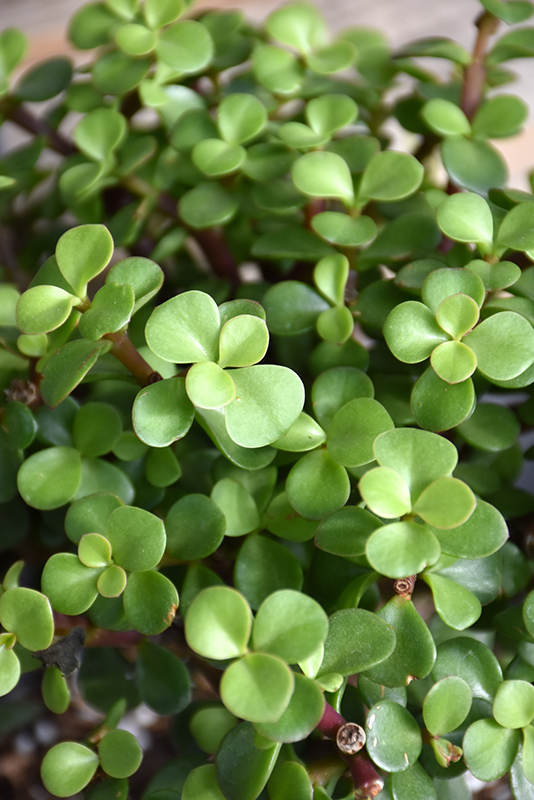Plant Finder
Height: 10 feet
Spread: 5 feet
Sunlight:
![]()
Hardiness Zone: 9a
Other Names: Dwarf Jade Plant, Elephant Bush, Porkbush
Description:
An upright plant with interesting reddish-brown stems covered in small succulent green leaves; grows large in frost free areas; popular use in bonsai; very drought tolerant and great for rock gardens or containers
Ornamental Features
Elephant Food is primarily valued in the landscape or garden for its ornamental upright and spreading habit of growth. It features dainty lavender flowers at the ends of the branches in early summer. It has attractive green deciduous foliage. The small succulent round leaves are highly ornamental but do not develop any appreciable fall color. The smooth gray bark and brick red branches are extremely showy and add significant winter interest.
Landscape Attributes
Elephant Food is a multi-stemmed deciduous shrub with an upright spreading habit of growth. It lends an extremely fine and delicate texture to the landscape composition which can make it a great accent feature on this basis alone.
This is a relatively low maintenance shrub, and can be pruned at anytime. Gardeners should be aware of the following characteristic(s) that may warrant special consideration;
- Insects
Elephant Food is recommended for the following landscape applications;
- Accent
- Mass Planting
- Rock/Alpine Gardens
- General Garden Use
- Container Planting
Planting & Growing
Elephant Food will grow to be about 10 feet tall at maturity, with a spread of 5 feet. It has a low canopy with a typical clearance of 1 foot from the ground, and is suitable for planting under power lines. It grows at a slow rate, and under ideal conditions can be expected to live for 40 years or more.
This shrub should only be grown in full sunlight. It prefers dry to average moisture levels with very well-drained soil, and will often die in standing water. It is considered to be drought-tolerant, and thus makes an ideal choice for xeriscaping or the moisture-conserving landscape. It is not particular as to soil pH, but grows best in poor soils, and is able to handle environmental salt. It is highly tolerant of urban pollution and will even thrive in inner city environments. This species is not originally from North America. It can be propagated by cuttings.
Elephant Food makes a fine choice for the outdoor landscape, but it is also well-suited for use in outdoor pots and containers. Its large size and upright habit of growth lend it for use as a solitary accent, or in a composition surrounded by smaller plants around the base and those that spill over the edges. It is even sizeable enough that it can be grown alone in a suitable container. Note that when grown in a container, it may not perform exactly as indicated on the tag - this is to be expected. Also note that when growing plants in outdoor containers and baskets, they may require more frequent waterings than they would in the yard or garden.




